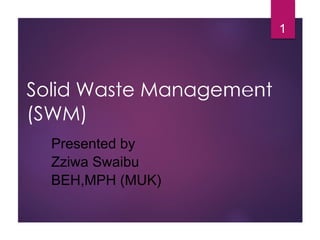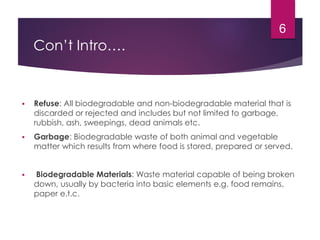This document provides an overview of solid waste management. It begins with a brief history of waste management from pre-modern to modern times. It then defines key terms related to solid waste and classifications of different types of solid waste. The document discusses the public health importance of solid waste management and factors to consider for solid waste disposal methods. It also covers topics like waste storage, collection, transportation, and different disposal methods including compositing, incineration, and landfilling.















































